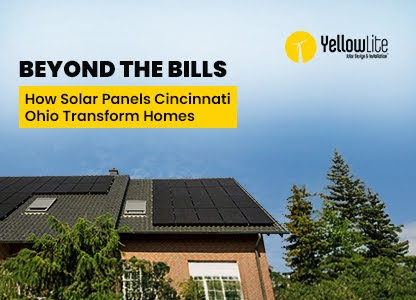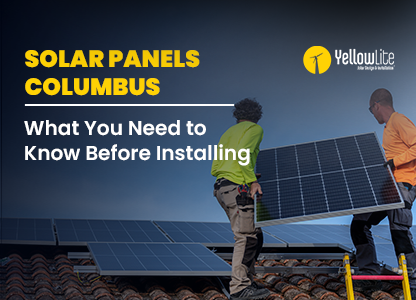Across rural America, a quiet revolution is taking root: solar panels rising above fields of lettuce, grazing sheep beneath shimmering arrays, and barns powered by the same sun that feeds the crops. It’s called agri voltaics, and it’s changing how we think about farmland, sustainability, and self-reliance.
What if your land could produce both food and electricity, without sacrificing yield or acreage?
That’s the power of dual-use solar, and farmers from Ohio to Oregon are already cashing in on the benefits. Whether you're a small family farm or a large-scale grower, integrating solar with agriculture could help cut energy costs, improve land efficiency, and future-proof your operations against rising utility rates.
So, how does it all work? And why are more and more rural Americans betting on sunlight to power their farms? Let’s break it down.
What Exactly Is Agri Voltaics?
Agri voltaics, also known as solar sharing or dual-use solar, is the practice of installing solar panels on agricultural land while still using the same land for crop cultivation or grazing. It’s about blending clean energy with food production without choosing one over the other.
In simple terms, an agri-voltaic system lets your land work smarter, not harder. Solar panels are mounted higher off the ground or spaced out strategically so crops can grow beneath or around them. If you’re wondering how this innovative setup works, YellowLite explains it.
How an Agri Voltaic System Works on a Farm?
A typical agri voltaic setup involves:
- Panels are raised higher so crops can grow underneath, and tractors or animals can still move around easily.
- They’re spaced and tilted just right to let in enough sunlight for the plants, while still collecting solar energy.
- The energy generated can be stored in batteries or sent to the grid, helping power your farm and lowering your electric bills.
At YellowLite, we help design custom agri voltaic systems based on your crop type, sunlight exposure, and farm layout.
Why More Farmers Are Saying Yes to Agri Voltaics
Farmers are embracing agri voltaics for one big reason: Efficiency!
With this system, you can:
- Lower your electricity costs with solar energy
- Improve land productivity by generating two income streams (crops + electricity)
- Protect crops from excessive heat thanks to partial shading from solar panels
In 2020, agri voltaics in the U.S. covered 27,000 acres and produced 4.5 GW of solar energy. By November 2024, that number more than doubled, with over 60,000 acres of agri voltaic installations generating 10 GW of solar power, according to NREL.
Some studies even suggest that certain crops, like leafy greens or berries, may thrive better in partial shade.
What Are The Benefits of an Agri Voltaic System?
Agri voltaics isn’t just good for energy savings and land use, it’s also a smart move for long-term sustainability. At YellowLite, we design systems that respect your land’s natural balance while enhancing your farm’s productivity.
1. Supporting Ecosystems and Pollinators
Traditional ground-mounted solar installations often involve heavy site prep that can degrade soil and disrupt ecosystems. But with agri voltaics, we take a different approach:
- Low-impact installations that preserve soil structure
- Pollinator-friendly vegetation beneath panels to support bees and beneficial insects
- Reduced need for herbicides with well-managed ground cover
These choices help maintain biodiversity and can even reduce your maintenance costs over time.
2. Better Stormwater Management
Agri voltaic designs can help your land manage water more efficiently. By using permeable ground covers and strategic panel spacing, we:
- Minimize stormwater runoff
- Encourage soil moisture retention
- Prevent erosion and waterlogging
This is especially helpful in regions with unpredictable rainfall or sensitive soil.
3. Smarter Crop Production
Not all crops need full sun all day. In fact, partial shade from solar panels can:
- Create a cooler microclimate that’s better for certain vegetables
- Improve soil moisture levels
- Reduce water use and boost crop resilience during drought
YellowLite customizes your agri voltaic system to work in sync with your crop selection, region, and farming practices.
4. Grazing Under Solar Panels
If you raise livestock, solar panels can serve double duty:
- Sheep or goats can graze beneath the panels, naturally controlling vegetation
- Shade from panels helps animals stay cooler in the summer
- Raised wiring and module heights protect both animals and equipment
It’s a cost-saving, animal-friendly approach that’s gaining popularity across rural farms.
Together, these benefits make agri voltaics more than a solar solution; they’re a smarter way to farm. From healthier crops to happier animals, agri voltaic systems create harmony between agriculture and clean energy. And when done right, they help you get the most from every acre.
Is Your Farm Ready for an Agri Voltaic System?
Not every piece of farmland is suited for agri voltaics, but many are. Here’s what typically works well:
- Flat or gently sloping land with good sun exposure
- Crops that don’t require full sun all day long (like lettuce, spinach, or herbs)
- Open pastures for grazing livestock underneath solar panels
YellowLite’s team will evaluate your farm’s layout, location, and energy usage to see if agri voltaics is a good fit.
Agri Voltaics in Action

How One Ohio Farm Saved Over $47,000 with Solar
Location: El Dorado, OhioSystem Size: 10.24 kW Ground-Mounted ArraySavings: $47,619[https://www.yellowlite.com/gallery/dayton-ohio-rural-ground-mount-solar-installation/]
In 2015, a farm owner in rural El Dorado partnered with YellowLite to install a 10.24 kW solar system on their property. The setup included 32 durable Canadian Solar panels and two reliable SMA inverters. Mounted on the ground for easy maintenance, the system was tailored to maximize sunlight exposure.
The Results:
Since going solar, the system has been producing about 11,000 kilowatt-hours of clean electricity every year. Over time, this translated into $47,619 in energy savings, a major win for the farm’s bottom line. Beyond the financial benefits, the farm also reduced its carbon footprint and gained energy independence.
Thinking Long-Term: What’s the ROI for Agri Voltaics?
An agri voltaic system can start paying for itself in as little as 6–8 years, depending on the size of your system and available incentives. After that, your energy is essentially free.
Plus, you’ll gain long-term value through:
- Energy independence
- Crop protection
- Sustainable branding for farm-to-table businesses
Farms with agri voltaic systems have seen an average 10–15% increase in overall revenue, thanks to diversified income streams.
How YellowLite Helps Farmers Go Solar And Smarter
At YellowLite, we’ve worked with farms and rural businesses for over a decade. When it comes to agri voltaic systems, our process is built around your unique needs:
- Free consultation and site assessment
- Custom agri voltaic system design that balances crop and power production
- Support with financing, incentives, and permits
- Ongoing system monitoring and maintenance
We don’t just install panels, we partner with you to maximize your land’s value.
Looking Ahead: The Future of Farming Is Bright (and Solar-Powered)
As climate challenges and rising energy costs reshape the agricultural landscape, agri voltaics offers a promising path forward. It’s not just about adopting solar, it’s about evolving how we farm, how we power our lives, and how we protect the land.
With the right system, farmers can feed communities and power them. And YellowLite is here to help make that happen.
FAQ
1. What is agrivoltaics, and how does it benefit farmers?
Agrivoltaics is the practice of combining solar energy production with agriculture on the same land. This system allows farmers to generate clean electricity while growing crops or grazing livestock under or around solar panels, increasing land productivity and reducing operational costs.
2. How does an agrivoltaic system work on a farm?
An agrivoltaic system uses ground-mounted solar panels installed with enough spacing and height to allow for crop growth or animal grazing beneath them. These dual-use solar setups help farms harvest both food and energy, while also improving soil moisture retention and creating shade for crops and livestock.
3. Is solar energy a good investment for farms?
Yes, installing solar for farms is a smart investment. It reduces long-term electricity bills, protects against rising energy costs, and offers potential tax incentives and grants. Over time, solar energy systems help farms become more sustainable and energy independent, especially in rural and off-grid areas.
4. What types of crops can be grown under agrivoltaic systems?
Crops like lettuce, tomatoes, kale, berries, and certain herbs thrive under agrivoltaic setups. These systems provide partial shade, which helps regulate temperatures and retain soil moisture, especially beneficial in arid or hot climates.
5. Can livestock graze under solar panels?
Absolutely. Many farmers integrate grazing animals like sheep into their agrivoltaic systems. The panels provide shade and shelter for animals, while grazing helps control vegetation growth, reducing maintenance costs and eliminating the need for herbicides.




